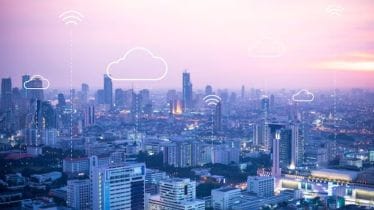The effects of urbanisation seems to have increased in cities in the past decade . With governments invested in city-oriented future planning, technologies such as Internet of Things (IoT) have seemingly started to make a mark in that respect. From what it’s understood, IoT’s influence can be a benefactor in the development of public utility infrastructure. “I think IoT is an essential technology for enabling a smart city. IoT can help a city’s governing authorities and citizens to take informed decisions and predict future trends. Various aspects of urban life can be connected, controlled, or monitored using IoT,” Arpit Sharma, senior manager – technology, research and advisory, Aranca, a research and analytics firm, told FE TransformX.
According to Allied Market Research, a market research firm, the global IoT in smart cities market carried a $148.6 billion valuation in 2022 and is expected to clock $931.5 billion by 2032, at a 20.5% compound annual growth rate (CAGR) between 2023-32. The firm also mentioned that an upward trend in government programs and smart city initiatives is important for progression of the IoT in smart cities market.
The correlating factor!
When one talks about IoT, the understanding is that the technology will provide ‘smart’ solutions. In that context, experts seem to believe that IoT-based smart solutions can be merged with a city’s working curriculum. Going by market reports, the growth of an IoT-based smart city is based on the Information and Communication Technologies’ (ICT) policy. As per the National Policy on Information Technology, 2012, by the Ministry of Electronics and Information Technology (MeitY), the policy aims to implement ICT’s full potential within India for tackling developmental and economic concerns in the country. The policy also intends to consolidate India’s position as the global IT and ITES hub, with IT being utilised for generating gross domestic product (GDP) and employment.
Based on market research, IoT’s influence over cities can help with optimal handling of resources such as transportation, energy, water, among others. Furthermore, the technology can help cities gain the ‘smart’ factor through effective traffic management, tackling air quality concerns, enhancement of better communication mediums, high smartphone-based connectivity, and development of eco-friendly solutions. A study from IoT Analytics, a data analysis tool, which was based on cities such as Amsterdam, Paris, Barcelona, among others, showed that the priority areas for governments’ IoT usage were found to be connected public transport (74%), flood monitoring (72%), video surveillance and analytics (72%), traffic monitoring and management (72%), connected streetlights (68%), pollution monitoring (68%), weather monitoring (68%), smoke detection (66%), smart metering – water (66%), and water quality monitoring (64%).
“I believe IoT allows cities to improve safety through real-time surveillance, reduce traffic congestion through smart traffic management, conserve energy by optimising lighting and heating systems, enhance waste management by deploying smart bins, and deliver more responsive public services through data-driven decision-making. These advantages can not only lead to cost savings but also enhance the quality of life for city residents,” Balaji Viswanathan, MD and CEO, Expleo India, an engineering, technology and consulting service provider, specified. The global smart cities sector is expected to earn $89.49 billion in 2023, with the total market capitalisation expected to reach $165.8 billion in 2028, as per a recent study by market research firm Statista.
The city factor!
IoT solutions have already started to make their mark in different countries. In 2016, the Polish city of Lubin got awarded the Smart City of the Year title, on account of its smart city program of a passenger information system for public transportation by implementing GPRS and GSM applications. In Los Angeles, the city’s government implemented payment integrated sensors for better management of traffic load. Market-based numbers have shown that Copenhagen’s smart lighting structure has brought down its energy costs by roughly 60%, along with United Kingdom’s Bristol recording cost savings worth one million pounds yearly by changing its street lighting with an advanced system. For example, Siemens, a multinational technology company, came up with The City Air Management Tool (CyAM), a cloud-oriented software, that can record a 90% efficiency in emission-based forecasts for upcoming three to five days.
In 2016, the Indian government initiated the Smart Cities Mission. Under this the aim is to build around 100 smart cities, which is anticipated to conclude in 2024. Reportedly, the state government has directed Rs 4.5 lakh crore in pipeline and Rs 2 lakh crore towards smart city-based plans, with fifth generation (5G) network’s success in the country considered key for IoT-based developments. Moreover, future predictions indicate that IoT’s role in creation of smart cities will depend on partnerships between cities and IoT-based companies. Statista has published the top 10 smart city rankings, namely Copenhagen, Seoul, Beijing, Amsterdam, Singapore, New York, London, Zurich, Sydney, and Toronto, which experts believe will be key for years to come. “I think the concept of smart transit hubs will gain traction. These hubs should be equipped with IoT sensors and technologies that provide real-time information on transportation options, traffic conditions, among others. This integrated approach should make urban mobility more accessible,” Narayan Mishra, co-founder and CTO, Tummoc, an IoT-based public transit application, concluded.
